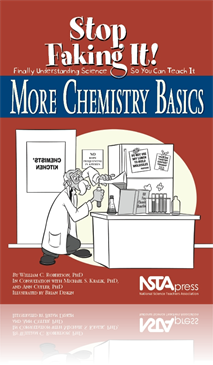All Chemistry resources
Book Chapter
The basics of chemical reactions were covered in the first chemistry book, including how to write and balance chemical equations that represent those reactions. There is also a quick review of chemical reactions in Chapter 1 of this book. We’re goi...
Book Chapter
Half a Life is Better Than None
Most of chemistry deals with chemical reactions and, hence, with how electrons in atoms behave either in single atoms or when those atoms get together with other atoms. There is a branch, though, that deals with the nuclei of atoms—and that’s wha...
Book Chapter
It would be impossible to investigate even a fraction of organic chemistry in this book, so in this chapter the author goes over a few things that will complement the limited organic chemistry in the first book. This is not a comprehensive chapter on...
NSTA Press Book
More Chemistry Basics: Stop Faking It! Finally Understanding Science So You Can Teach It
Overwhelmed by orbitals? Terrified of thermodynamics? Agitated by acids and bases? Have no fear! This follow-up to the award-winning Chemistry Basics will clear up your chemistry woes. ...
By William C. Robertson, Ph.D.
Book Chapter
As stated in “About This Book,” the author isn’t going to take the usual approach to the subject of chemistry. Because virtually all explanations of chemical reactions are based on our current model of atoms and molecules, the first thing to do...
Book Chapter
At the end of the first chapter, you realized, hopefully, that the model of an atom that we have so far (Rutherford’s model of a concentrated positive nucleus with negative charges around it) doesn’t go very far in helping us explain observations...
Book Chapter
In thinking about a title for this chapter, the word periodicity came to mind. I was sure this had some kind of pop culture reference. After discussing this with my wife, we figured I was thinking of synchronicity, which is a reference to music b...
Book Chapter
We now know enough about atoms and how they combine to investigate a number of different chemical reactions. We’ll even be able to represent those reactions with symbols that tell us how many of each kind of atom we begin with and how many of each ...



